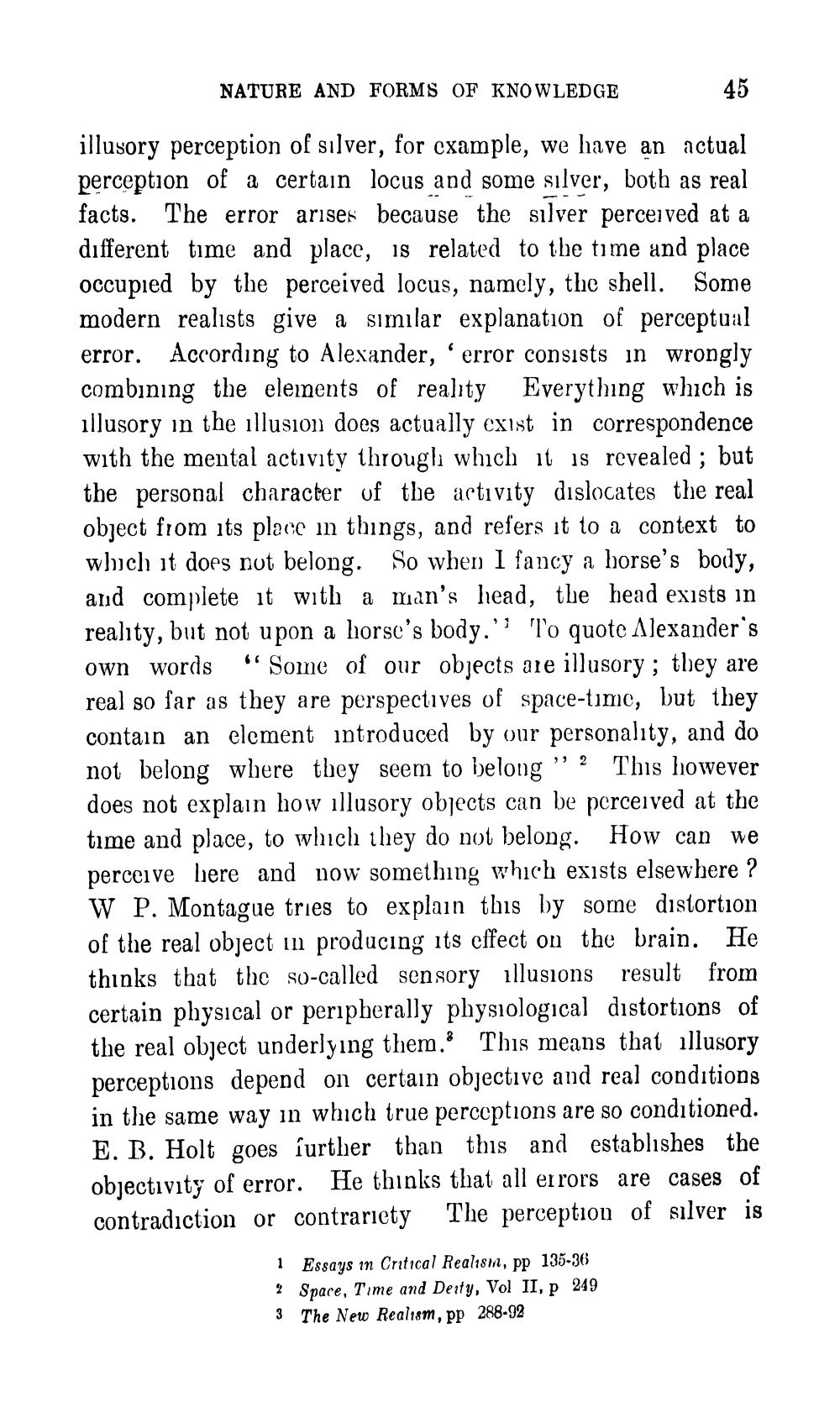________________
NATURE AND FORMS OF KNOWLEDGE
45
illusory perception of silver, for example, we have an actual perception of a certain locus and some silver, both as real facts. The error arises because the silver perceived at a different time and place, is related to the time and place occupied by the perceived locus, namely, the shell. Some modern realists give a similar explanation of perceptual error. According to Alexander, 'error consists in wrongly combining the elements of reality Everything which is illusory in the illusion does actually exist in correspondence with the mental activity through which it is revealed; but the personal character of the activity dislocates the real object from its place in things, and refers it to a context to which it does not belong. So when I fancy a horse's body, and complete it with a man's head, the head exists in reality, but not upon a horse's body.'' To quote Alexander's own words “Some of our objects are illusory; they are real so far as they are perspectives of space-time, but they contain an element introduced by our personality, and do not belong where they seem to belong ” ? This however does not explain how illusory objects can be perceived at the time and place, to which they do not belong. How can we perceive here and now something which exists elsewhere? W P. Montague tries to explain this by some distortion of the real object in producing its effect on the brain. He thinks that the so-called sensory illusions result from certain physical or peripherally physiological distortions of the real object underlying them. This means that illusory perceptions depend on certain objective and real conditions in the same way in which true perceptions are so conditioned. E. B. Holt goes íurther than this and establishes the objectivity of error. He thinks that all errors are cases of contradiction or contrariety The perception of silver is
1 Essays in Critical Realism, pp 135-36 2 Space, Time and Derty, Vol II, p 249 3 The New Realism, pp 288-92




